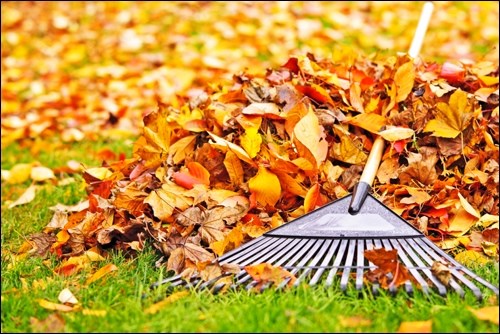Even though our days are getting shorter and cooler, it is important to continue to care for your lawn, even though many of the outside chores are getting wrapped up. The autumn is actually one of the most important times to ensure you continue to have a healthy and happy lawn.
One of the guiding principles of having a healthy lawn with a more “organic” approach is to nourish the soil. In the autumn it is a good time to apply finished compost to the surface of the lawn to help add nutrients but also to help in the all over health of the soil. The addition of organic matter like compost that is top dressed on the lawn will add microorganisms that will help break down the thatch which in turn will ensure a healthier lawn.
If you would like to apply a fall fertilizer that is more conventional in nature then apply a fertilizer that is higher in potassium. This helps to toughen up the grass to help be ready for the impending winter. There are many slow release fertilizers that work well to apply at this time of year that make nutrients available to the turf in the early spring.
If your lawn was getting a bit thin in any area, the fall is the perfect time to over seed. A lawn area that is most healthy is one that is so dense that weeds are unable to grow due to the competition. Ensure you choose cultivars that will suit what is already growing there, but also consider some varieties that are able to withstand specific cultural conditions. For example, some of the perennial rye grasses and some of the fine fescues might better suit areas that have light soil that is not well watered.
If your lawn area is compacted, then consider fall aeration. The process of aeration involved removing small plugs of earth from the top layer of the soil. This helps in allowing water, air and any applied nutrients to penetrate the soil more easily which in turn helps to make your lawn healthier.
You should continue to mow your lawn until the temperatures drop low enough for the lawn to stop growing. Do not let your lawn go into fall too long or too short. A turf that is too long will encourage the development of snow mold in the very early spring. A lawn that is too short will often show more injury during fall conditions that are less than ideal. If you have been cutting your lawn at a higher level (ie about three inches) then continue to mow at that height until growth ceases.
Don’t forget to put your lawn mower away well maintained. Sharpen the blades so it is ready to go first thing in the spring. Clean the air filters, change the spark plug or even spring for a tune-up. If your lawnmower has done its term with your lawn, then consider getting a new one this fall, while the sales are on. In fact, why not choose a sustainable alternative and purchase a reel mower that relies on your power rather than electricity or fuel?
Last but not least, do not forget to rake up those leaves. Make it a fun chore involving the family or friends by making a time consuming chore into a game. When was the last time you played in a pile of fallen leaves? If it has been too long, find a child to help you and then everyone will understand your childish joy in this great fall activity. Make the task easier using blowers or mowers to help with the biggest part of the job. Finish it off by mulching those leaves in order to help protect your plants against the cold winds of winter and compost the extra!
— Hanbidge is a horticulturist with the Saskatoon School of Horticulture and can be reached at 306-931-GROW(4769); by email at growyourfuture@gmail.com or check out our website at www.saskhort.com



